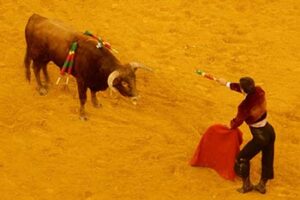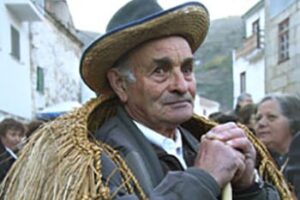
To the Manor Born: Lording it in Portugal’s Grand Manor Houses
By Martin Li
For many people the thought of Portugal only conjures up images of beaches, golf, port wine and endless sardines. But the country has far more to offer, especially its undiscovered northern Minho region which is dotted with towns and carpeted by vineyards, and where a visit to the Peneda-Gerês National Park can reveal glimpses of ancient lifestyles which have changed little for centuries. Minho was once one of the favorite places for wealthy Portuguese to build their manor houses, and these grand estates still dominate large areas of the landscape.
Many have recently been restored to their former glory and opened as high quality accommodation where visitors can luxuriate in the rural highlife as guests of aristocratic families who have owned these estates and their grand houses for generations if not centuries.
Here are four of the best:
Casa de Juste (Vale do Sousa, near Lousada) Vinho Verde, literally “green wine”, is the young, slightly sparkling wine produced in both red and white varieties in the Minho region. Casa de Juste is located in the heart of Vinho Verde country and is typical of the region’s grand wine producing estates. Set in a five hectare vineyard, and with onsite winemaking and cheesemaking, guests can enjoy an authentic agrotourism experience in peaceful and comfortable surroundings. Autumnal guests are welcome to help with the grape harvest if they wish. Alternatively they can just enjoy the output. The approach to the house is by a narrow driveway bounded by a stone wall beyond which are grapevines and pens of poultry and peacocks. The house is set within a walled courtyard enclosing an ornamental garden occupied by a family of swans. A stream fed by a stone fountain runs down the center of the garden. A small, ornate family chapel dominates one corner of the house and to the rear is one of the estate’s vineyards. The view from the shaded terrace across the courtyard to the vineyards beyond would itself justify a visit. The house is built around a 15th century tower. The kitchen is the oldest part of the house and retains many features of the ancient tower, most noticeably its massively thick walls. Legend has it that during the time of the Napoleonic invasion of Portugal, fleeing aristocrats hid jewels inside the walls of the tower to prevent them from being plundered. The grandfather of the current owner is believed to have squandered many years searching in vain for these jewels. Bejeweled or not, the kitchen is about as cozy as a kitchen could be, with its slate-tiled floor, range stove and regular occupancy by the family’s friendly dogs.
Casa da Lage (Arcos (S. Pedro), near Ponte de Lima) A stay at Casa da Lage is likely to leave one with excessive feelings of grandeur. A magnificent 15th century house set in a large, secluded estate of vineyards and eucalyptus woods, Casa da Lage has often been visited by European royalty as well as the Portuguese president and the Duke of Bragança, Pretender to the Portuguese throne. The approach to the house passes through two stone arches. The inner wall forms part of an enclosed courtyard. At one corner is a small family chapel, which can be accessed from the first floor via a pretty covered terrace. Two stone towers guard the imposing facade of the house and an extension, enclosing guest accommodation, has been added to the side of one of the towers. The family living and dining rooms are stately and furnished in fine antiques. The ceilings of the reception rooms are ornately carved in wood and were discovered by chance when a piece of the plaster covering the ceiling fell away. The house’s large ground floor wine cellar has been converted into a guests’ living and dining area. This stone-walled room retains a cavernous feel and is decorated with antique Portuguese costumes and ceramics. Behind the house is a stunningly situated tennis court. Bordered on one side by a low outbuilding with views over its tiled roof to the elegant towers of the house beyond, its other sides look over the estate’s main vineyards. It should be enough to make anyone want to take up the game. Next to the tennis court is an attractive path through the vineyard, with densely planted borders and overhung with vine-growing arches.
Torre de Refoios (Refoios, near Ponte de Lima) To really lord it up as an aristocrat, you can’t beat having a title and living in a castle. Should you lack either of these trappings yourself, you can enjoy these privileges vicariously by staying at Torre de Refoios in the lush Lima valley. The imposing stone tower dates back to the 12th century and commands a five hectare estate growing vines and kiwi fruit. Although lacking the height of similar defensive towers in Tuscany and Umbria it nevertheless stands impressively in the center of its grounds. Two meter thick walls bear testimony to its survival through more troubled times. The tower itself isn’t used for accommodation nowadays and instead houses antique woodworking and winemaking implements. The view from the top of the tower over the surrounding arable fields, green hills and Refoios village, with its yellow walled monastery and white church, is well worth the climb up a few rickety staircases. The estate is owned by the affable José Vaz de Almada, whose aristocratic family has occupied the tower since the 14th century. The tranquillity of the estate seems to bring out the artist in guests judging by the many sketches of the tower and portraits of Gypsy – the owner’s loveable pet labrador – drawn in the visitors’ book. Although secluded within a walled estate, the tower is only a short walk from Refoios with its pretty square and tempting café and cake shop.
Quinta do Monteverde (Castelo do Neiva, near Viana do Castelo) Entering Quinta do Monteverde is like walking into the pages of a period design magazine or historic film set. Although the house has recently been completely refurbished, it retains its historic character, helped by being furnished with original furniture and ornaments from the house. Guestrooms are exquisitely furnished. Portraits of ancestors and detailed family trees adorn the walls of the ground floor living rooms. Several of the exterior doors are iron-plated, attesting to the self-preservation needs of rural aristocrats who lived away from the protection of the crown. The house dates back to the 16th and 17th centuries although a stone above the kitchen fireplace, the oldest part of the house, curiously bears the date 1491. The house and grounds are completely enclosed within a high wall, a kilometer from the sandy beaches of Castelo do Neiva. The peaceful setting and closed gates (you ring a bell to enter) create an intense feeling of tranquillity. The lawned gardens include fruit orchards, olive and nut trees and a 500-year-old carved granite fountain that has in the past been used as a family swimming pool. One corner of the grounds is occupied by a church built on land gifted by a previous owner to the local parish. Although the refined surroundings make eating in a tempting option, several local restaurants serve excellent fresh seafood caught at the nearby fishing hamlet. A couple are within walking distance. The historic town of Viana do Castelo is also just seven kilometers away.
Fact File
The Manor Houses of Portugal Promotion Company
(for further information and to make reservations at any of the Manor Houses)
Tel: +351 258 835 065
Fax: +351 258 811 491
E-mail: lumby@manorhouses.com
Website
Address: Apartado 596, 4900 Viana do Castelo, Codex, Portugal.
Quinta da Aveleda
The grandfather of Fernando Guedes, owner of Casa de Juste, founded the company which produces Mateus Rose wines. That business is today run at Quinta da Aveleda. A visit to Aveleda, complete with winetasting and a stroll through its elegant gardens, is highly recommended. Tel: +351 255 718 200
Fax: +351 255 711 139
E-mail: info@aveleda.pt
Website: aveleda.pt
Address: PO Box 77, P-4560-730 Penafiel, Portugal.
Peneda-Gerês National Park
Parts of the park are very remote and inaccessible and some of its isolated settlements have remained virtually untouched by modern civilization. Their seclusion has preserved centuries-old traditions, including a community-based lifestyle founded on hill farming and barter.
Wolves and Wilderness
British expatriate Steve Kane (tel +351 965 592 267 or contact through Torre de Refoios) guides fascinating hikes through the unspoiled hills behind Refoios, a region dotted with ancient rural communities and still roamed by wolves. Portugal Resources and Information
Visit the “Welcome to Portugal” website for everything you need to know about Portugal including economic facts, brochure ordering, trade and tourism, and helpful links to Portuguese companies and organizations.
Website:
- Valentine’s Day Suggestions…for that Special Person - January 22, 2026
- Missouri Sports Travel Adventure: From Landmarks to Ballparks - January 21, 2026
- What First-Time Visitors Get Wrong About Visiting Iceland - January 15, 2026







